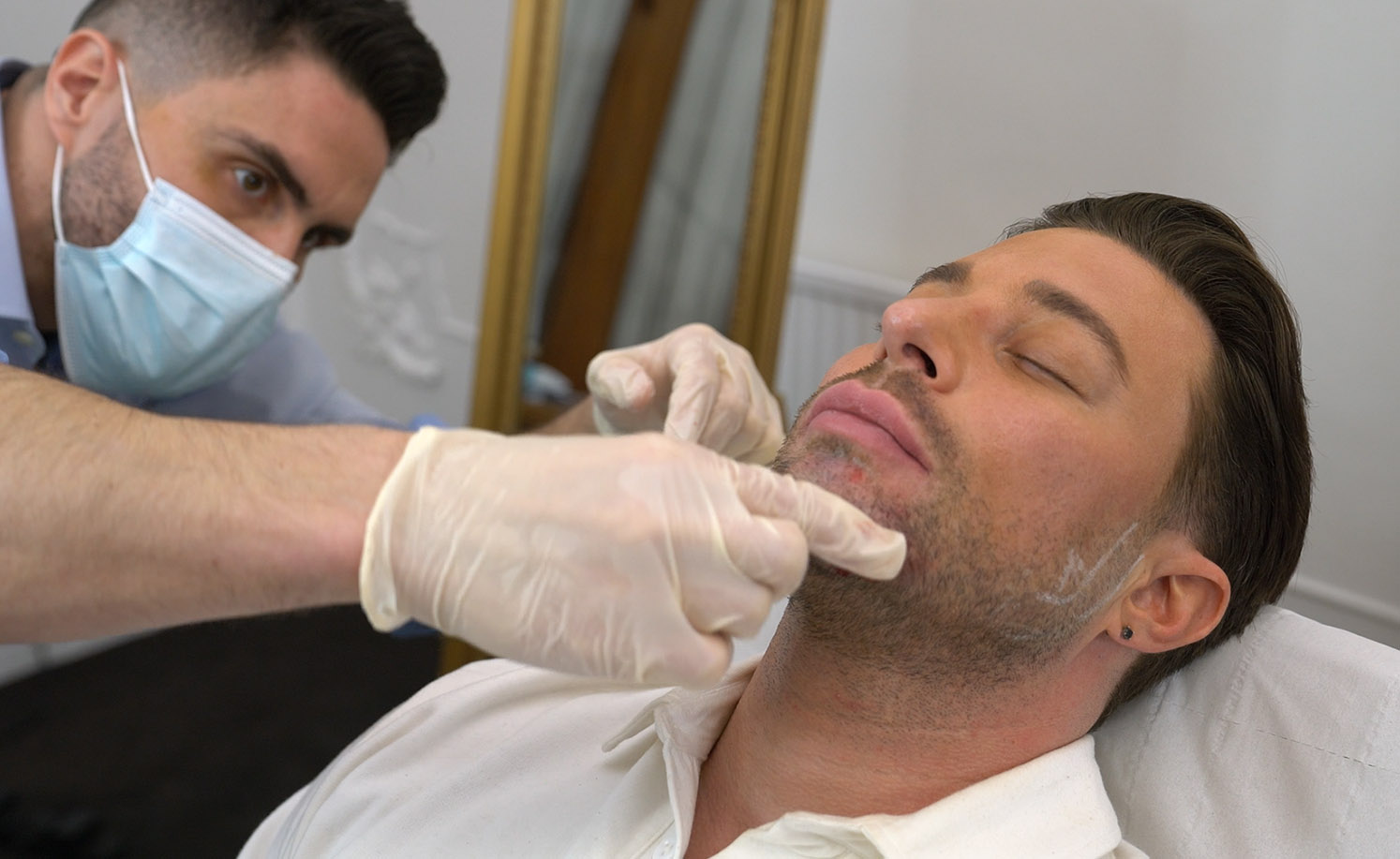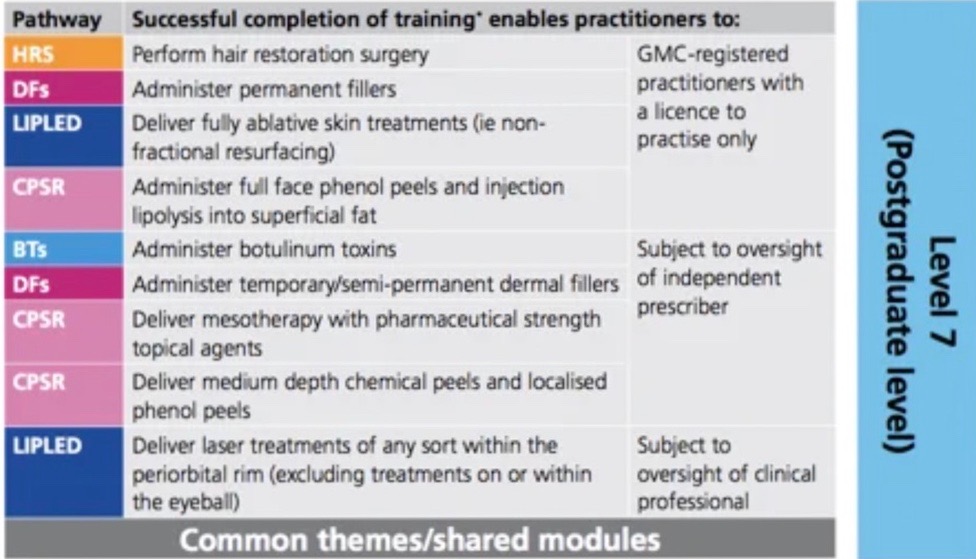
Save 10% off all our courses!
Plus get the Polynucleotides course for FREE when enrolling on the Level 7 course.

Plus get the Polynucleotides course for FREE when enrolling on the Level 7 course.
 Non-surgical aesthetics is a term which is used to encompass a wide range of cosmetic treatments not undertaken in a surgical setting, being minimally invasive. Commonly, procedures include anti-wrinkle injections with products such as Botox ® and dermal filler injections.
Non-surgical aesthetics is a term which is used to encompass a wide range of cosmetic treatments not undertaken in a surgical setting, being minimally invasive. Commonly, procedures include anti-wrinkle injections with products such as Botox ® and dermal filler injections.
Others include skin treatments such as chemical peels, Platelet-Rich Plasma (PRP) injections (know as the ‘vampire facelift’) and intradermal use of hyaluronic acid to promote skin tightening. While this is a rapidly expanding field with exciting advances and constant innovation, the regulatory framework to accompany this emerging ‘specialty’ has lagged somewhat behind. Referred to as a ‘specialty’, from a healthcare professional’s perspective, there is no recognised specialty training pathway to becoming an aesthetic specialist.
Many clinicians may become highly experienced and talented injectors, with reputations and cohorts of loyal patients to match. Nevertheless, there are some clear differences between the non-surgical aesthetics industry and other areas of healthcare.
Health Education England (HEE) has published guidance on who should carry out aesthetic treatments in the UK. This was in response to the Keogh Report (2013). Sir Bruce Keogh was commissioned to look into this area in the context of growing concern about the lack of regulation and guidance for both injectors and patients. The recommendations that emerged from the years of consultation between 2013-2016 form the basis of best practice within the UK, and there are some important points summarised below:

It is clear that certain procedures can only be carried out by GMC-registered medical doctors (hair transplant surgery, permanent dermal filler). Other procedures such as the commonly carried out botulinum toxin and temporary dermal filler can be carried out by practitioners who have attained a postgraduate level of training, and ‘subject to oversight of an independent prescriber’. The level of oversight will depend on individual cases and the judgement of the practitioner and overseer. As such, there is a degree of ambiguity and variation in skill levels is possible here.
What is clear, is that it will be very difficult for non-healthcare professionals to reach the level stipulated by these guidelines. Nonetheless, there is no legislation governing who can carry out procedures and as such, these are best practice guidelines.
Who can prescribe Botulinum Toxin (eg: Botox ®) ?
Non-prescribers can inject botulinum toxin, provided they have had the product prescribed by a permitted prescriber, and, importantly, that the prescriber has carried out a face-to-face consultation with the patient.
A loaded question!
Next, from the indemnity perspective:
Ensure you have indemnity cover which specifically covers your aesthetic practice, in the setting in which you will be practising.
You must also ensure the amount you earn via this practise is accounted for in your policy, as if you exceed a certain amount you may not be covered.
You are unlikely to get indemnity at a reputable provider without attendance at an accredited training course like the Interface Aesthetics Foundation Course.
From the training perspective (what course is required)?
In order to get indemnity cover, you must undertake an approved training course. With this certificate you are then able to obtain indemnity and start practising.
An approved Foundation Course is the first step in any practitioner’s journey into the area of non-surgical aesthetics. Choosing a course which provides sufficient hands-on practical experience using live model patients is of the utmost importance.
In addition, look out for the accreditations and partners of the course you choose. For example, is the course CPD accredited , recognised by the leading indemnity providers and partnered with leading names within the industry. Interface Aesthetics’ courses are CPD accredited , recognised by the two leading providers of cosmetic insurance in the UK, and partnered with Allergan ®; producers of Botox ® and Juvederm ® ranges.
How do I progress within the industry, ensuring I acquire more skills?
A Foundation Course is the first step, but in order to progress you must both practise and attend further training.
Practise should involve the techniques you have learnt and feel confident and competent to perform – this is why the choice of a Foundation Course with plenty of hands-on experience is so important.
The Interface Aesthetics Foundation Course in Botox ® and dermal filler takes place over two consecutive days, in small groups, ensuring delegates get the maximum hands-on injecting experience.
Attending further training may involve Advanced Courses , where techniques such as filler around the eyes and advanced Botox® injection techniques will be covered. Practitioners may opt for Masterclass courses which focus specifically on an area or technique. Ultimately, practitioners my wish to undertake a Level 7 qualification – this will be discussed in greater detail in a subsequent blog.
Whatever you reason for wanting to train in aesthetics, ensure that you take responsibility for the quality of your training by checking the credentials of your trainers and the format, practical content and accreditations of the course itself. At Interface Aesthetics, one of our expert trainers will be happy to discuss which of our courses may be right for you.